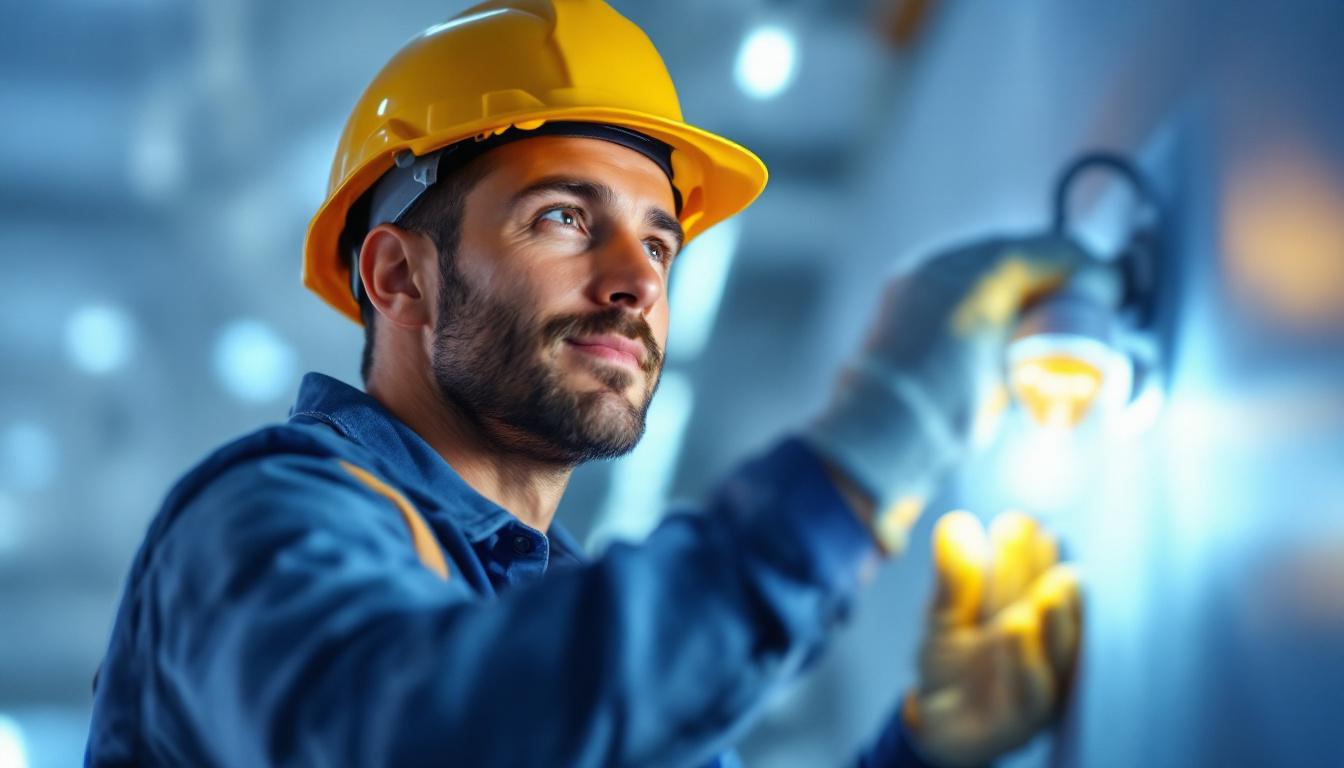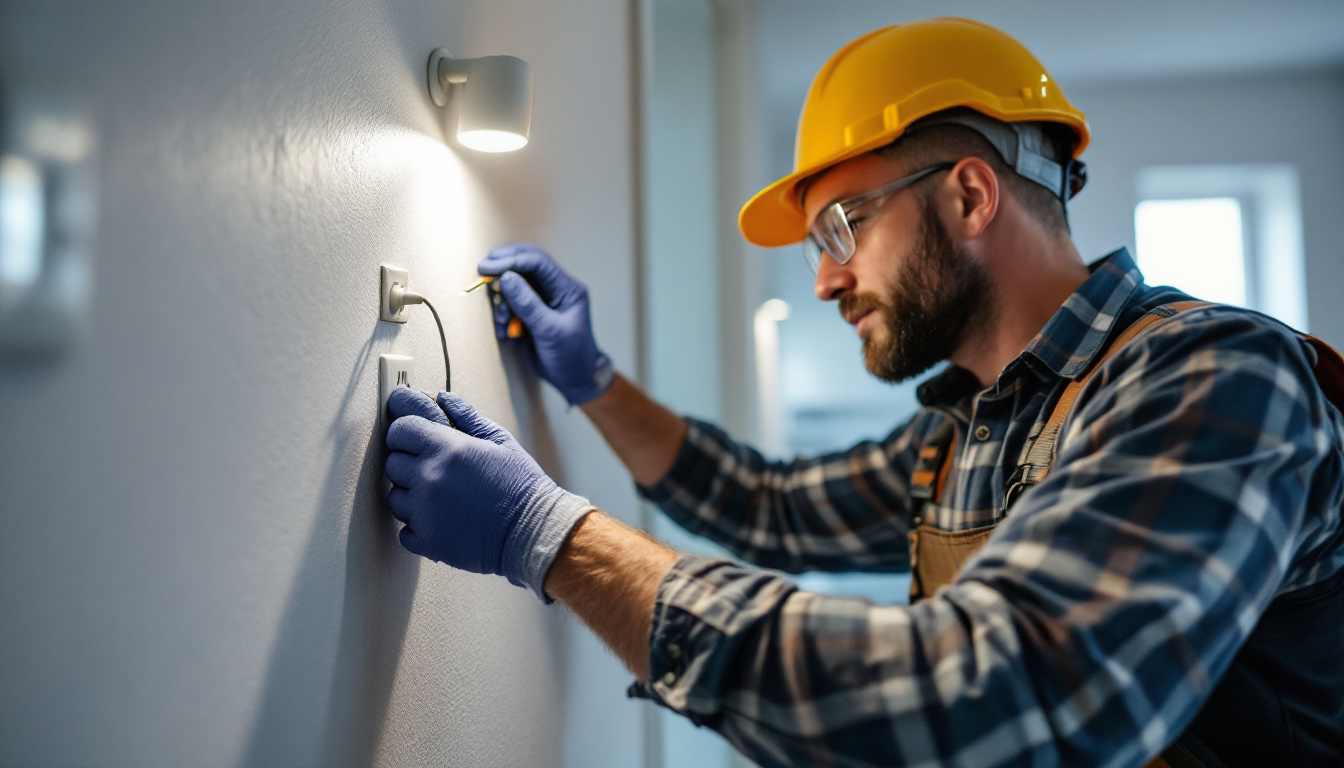
Fluorescent bulbs have long been a staple in the lighting industry, particularly for commercial and industrial applications. Their efficiency and longevity make them an attractive option for lighting contractors looking to provide value to their clients. However, one common question that arises is whether these bulbs generate significant heat during operation. Understanding the thermal characteristics of fluorescent bulbs is essential for contractors aiming to maximize the effectiveness of their lighting solutions.
Fluorescent bulbs operate on a principle that differs significantly from traditional incandescent bulbs. They utilize an electric current to excite mercury vapor, which in turn produces ultraviolet light. This ultraviolet light then interacts with a phosphor coating on the inside of the bulb, emitting visible light. This process is more energy-efficient than incandescent lighting, but it does come with its own thermal dynamics.
While fluorescent bulbs do generate some heat, they do so in a manner that is generally less intense than that of incandescent bulbs. The heat produced is primarily a byproduct of the electrical components within the bulb, such as the ballast, rather than the light-emitting process itself. Understanding this distinction is crucial for contractors when considering the installation and application of these bulbs.
The heat generated by fluorescent bulbs can be attributed to several factors. Firstly, the ballast used to regulate the electrical current can become warm during operation. This is particularly true for older magnetic ballasts, which tend to be less efficient than modern electronic ballasts. As a result, contractors should be aware of the type of ballast being used when assessing heat output.
Secondly, the ambient temperature of the installation environment can also influence how hot the bulbs become. In poorly ventilated spaces, heat can accumulate, leading to higher operating temperatures. This is an important consideration for contractors, as it can affect both the performance and lifespan of the bulbs.
Moreover, the design and placement of fluorescent fixtures can further impact heat dissipation. For instance, fixtures that are tightly enclosed or placed in areas with limited airflow may exacerbate heat retention, potentially leading to overheating issues. This is particularly relevant in settings like warehouses or manufacturing plants, where large arrays of fluorescent lights are often used. Proper fixture design and strategic placement can help mitigate these risks, ensuring that the lighting remains effective without compromising safety or efficiency.
Additionally, advancements in fluorescent technology, such as the development of high-efficiency bulbs and improved ballast designs, have also contributed to reducing heat output. These innovations not only enhance energy savings but also minimize the thermal load on surrounding environments. As contractors evaluate their lighting options, it is beneficial to stay informed about the latest technologies and their implications for heat generation, as this knowledge can significantly influence project outcomes and client satisfaction.
For lighting contractors, understanding the thermal characteristics of fluorescent bulbs is vital for several reasons. Not only does it impact the performance of the lighting system, but it also has implications for safety, energy efficiency, and overall client satisfaction.
Heat management is a critical safety consideration for any lighting installation. Excessive heat can lead to premature failure of bulbs and ballasts, and in some cases, it can pose a fire risk. Contractors must ensure that their installations allow for adequate airflow around the fixtures to dissipate heat effectively. This is particularly important in enclosed spaces or areas where multiple fixtures are clustered together.
Additionally, contractors should educate their clients about the importance of not covering or obstructing fluorescent fixtures, as this can trap heat and lead to dangerous conditions. Providing clear guidelines on installation and maintenance can help mitigate these risks.
Efficiency is a key selling point for fluorescent bulbs, and managing heat is integral to maintaining that efficiency. When bulbs operate at higher temperatures, their performance can be compromised, leading to reduced light output and shorter lifespans. This can result in increased costs for clients, as they may need to replace bulbs more frequently.
Lighting contractors should emphasize the importance of proper installation techniques that promote heat dissipation. This includes selecting appropriate fixtures, ensuring proper spacing between bulbs, and using high-quality ballasts. By doing so, contractors can help clients maximize their energy savings and enhance the longevity of their lighting systems.
To ensure optimal performance and safety when installing fluorescent lighting systems, contractors should adhere to several best practices. These practices not only enhance the effectiveness of the lighting but also contribute to overall client satisfaction.
The choice of fixtures plays a significant role in the heat management of fluorescent bulbs. Contractors should opt for fixtures that are designed for fluorescent applications, as these will typically have built-in features to promote airflow and heat dissipation. Additionally, selecting fixtures with reflective surfaces can enhance light output while minimizing heat accumulation.
Moreover, it is essential to consider the wattage and type of fluorescent bulbs being used. Higher wattage bulbs may generate more heat, so contractors should ensure that the fixtures can accommodate the specific requirements of the bulbs chosen.
When designing the layout of a lighting system, spacing between fixtures is crucial. Contractors should avoid clustering fixtures too closely together, as this can lead to heat buildup and reduced efficiency. A well-planned layout not only enhances the aesthetic appeal of the space but also allows for better heat distribution.
In addition to spacing, contractors should consider the height at which fixtures are installed. Higher installations can promote better airflow and reduce the risk of heat accumulation. This is particularly important in commercial spaces where multiple fixtures are used.
Regular maintenance is essential for ensuring the longevity and performance of fluorescent lighting systems. Contractors should establish a maintenance schedule that includes checking the condition of the bulbs, ballasts, and fixtures. This proactive approach can help identify potential issues before they escalate, ultimately saving clients time and money.
Lighting contractors should take the time to educate their clients about the importance of maintenance. This can include guidance on how to clean fixtures, check for signs of wear, and recognize when bulbs need replacement. Providing clients with a simple maintenance checklist can empower them to take an active role in preserving their lighting systems.
Additionally, contractors should inform clients about the signs of overheating, such as flickering lights or unusual noises from the ballast. By being vigilant and proactive, clients can help ensure the longevity and efficiency of their fluorescent lighting systems.
To further enhance client satisfaction and demonstrate value, lighting contractors can offer energy audits as part of their services. These audits can help identify areas where energy efficiency can be improved, including the assessment of fluorescent lighting systems. By analyzing heat generation and overall performance, contractors can provide tailored recommendations that align with the client’s goals.
Energy audits not only benefit clients but also position contractors as knowledgeable professionals in the field. This can lead to increased trust and repeat business, as clients are more likely to return to contractors who demonstrate a commitment to their success.
The lighting industry is constantly evolving, and fluorescent technology is no exception. As energy efficiency standards continue to rise, advancements in fluorescent bulb design and technology are likely to emerge. Contractors should stay informed about these trends to remain competitive and provide the best solutions for their clients.
One area of development is the advancement of electronic ballasts, which are becoming more prevalent in fluorescent lighting systems. These ballasts are more efficient than their magnetic counterparts and generate less heat, contributing to improved overall performance. Contractors should consider recommending electronic ballasts to clients looking to upgrade their existing systems.
Additionally, the integration of smart technology into lighting systems is gaining traction. Smart fluorescent bulbs can offer features such as remote control, dimming capabilities, and energy monitoring. By staying abreast of these innovations, contractors can position themselves as forward-thinking professionals who can meet the evolving needs of their clients.
Sustainability is becoming increasingly important in the lighting industry. Contractors should be aware of the environmental impact of fluorescent bulbs, particularly in terms of their disposal. Educating clients about proper disposal methods and recycling options can help minimize the ecological footprint of their lighting systems.
Furthermore, as more clients seek sustainable solutions, contractors may find opportunities to promote energy-efficient alternatives, such as LED lighting. While fluorescent bulbs still have a place in many applications, being knowledgeable about sustainability trends can enhance a contractor’s reputation and appeal to environmentally conscious clients.
In conclusion, understanding the thermal characteristics of fluorescent bulbs is essential for lighting contractors aiming to maximize their success. By recognizing how these bulbs generate heat and implementing best practices for installation and maintenance, contractors can enhance performance, safety, and client satisfaction. Staying informed about emerging technologies and sustainability trends will further position contractors as industry leaders, ensuring they remain competitive in a rapidly evolving market.
Ultimately, the ability to provide effective and efficient lighting solutions is paramount for contractors. By prioritizing heat management and educating clients, they can foster long-term relationships and contribute to the overall success of their projects.
Ready to elevate your lighting installations with the highest quality products at the most competitive prices? Look no further than LumenWholesale. We provide lighting contractors with spec-grade lighting solutions that meet the strictest industry standards, ensuring your projects shine with reliability and performance. Say goodbye to local distributor markups and hello to our unbeatable wholesale prices, complete with the convenience of free shipping on bulk orders. Don’t compromise on quality or value—choose LumenWholesale for your lighting needs and make every project a glowing success. Discover our extensive selection and start saving today by visiting Wholesale Lighting at the Best Value.

Discover how LED plant lights revolutionize energy efficiency in horticulture.

Explore how troffers are revolutionizing the lighting industry, offering contractors innovative solutions for efficiency and design.

Discover why lighting contractors should pay attention to clothes dryer outlets in their projects.

Illuminate your projects with confidence using expert insights on solar lights for posts.